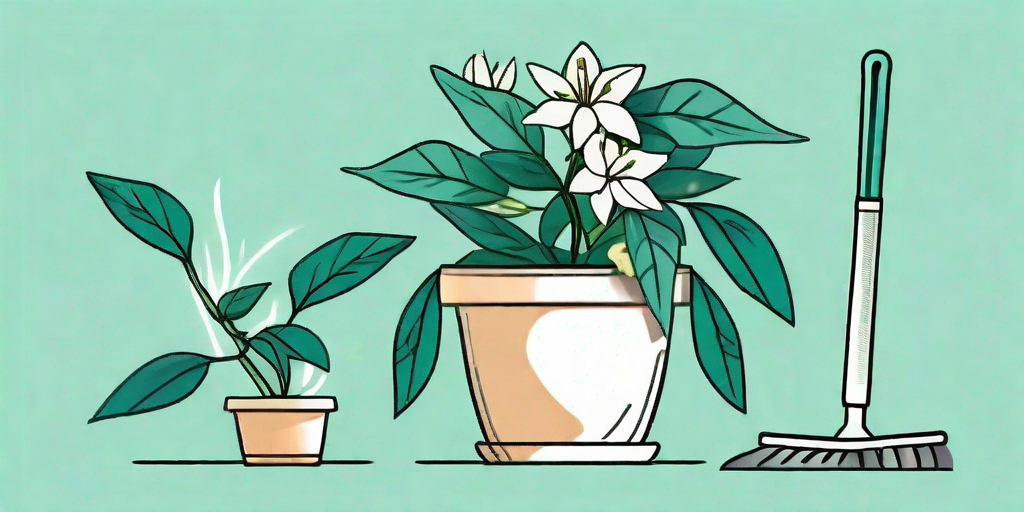
Ah, the Jasmine plant. Known for its sweet, intoxicating fragrance and delicate, star-shaped flowers. It's the life of the garden party, until it decides to be a party pooper and stops blooming. But don't worry, we've got some tips to get your Jasmine back in the party mood.
Understanding the Jasmine Plant
Before we dive into the nitty-gritty, it's important to understand what makes Jasmine tick. Jasmine plants are a bit like the Goldilocks of the plant world. They don't like it too hot, or too cold, but just right. They also love a good drink, but not too much, mind you. They're a bit fussy, but we love them anyway.
There are over 200 varieties of Jasmine, but the most common ones are Jasminum polyanthum (winter jasmine) and Jasminum officinale (summer jasmine). Winter jasmine blooms in late winter or early spring, while summer jasmine blooms in summer and fall. So, if your Jasmine isn't blooming, it might just be off-season. Or it might be sulking. Let's find out.
Reasons Your Jasmine Plant Might Not Be Blooming
1. Not Enough Light
Jasmine plants love the sun. They're like that friend who's always trying to get a tan. If your Jasmine plant isn't getting at least four to six hours of sunlight a day, it might refuse to bloom. It's their way of protesting, like a toddler refusing to eat their vegetables.
So, if your Jasmine plant is in a shady spot, consider moving it to a sunnier location. If it's an indoor plant, place it near a south-facing window. If moving the plant isn't an option, you can supplement natural light with a grow light. Just don't go overboard with the light, or you'll have a Jasmine plant with a sunburn, and nobody wants that.
2. Improper Watering
As we mentioned earlier, Jasmine plants love a good drink, but they don't like to have wet feet. Overwatering can lead to root rot, which can prevent the plant from blooming. On the other hand, underwatering can stress the plant and also prevent blooming.
The key is to keep the soil moist but not waterlogged. A good rule of thumb is to water the plant when the top inch of soil feels dry to the touch. And make sure the pot has good drainage to prevent water from pooling at the bottom.
3. Incorrect Temperature
Jasmine plants are a bit like Goldilocks when it comes to temperature. They don't like it too hot or too cold. The ideal temperature for Jasmine plants is between 60-75°F (15-24°C). If the temperature goes beyond this range, the plant might refuse to bloom.
So, keep your Jasmine plant in a location where the temperature is just right. Avoid placing it near heaters or air conditioners, as these can create hot or cold drafts. If your Jasmine plant is outdoors, consider moving it inside during extreme weather conditions.
How to Get Your Jasmine Plant Blooming Again
Now that we've identified the potential reasons why your Jasmine plant might not be blooming, let's look at how to get it back on track. Here are some tips to get your Jasmine plant blooming again:
- Provide Adequate Light: Ensure your Jasmine plant gets at least four to six hours of sunlight a day.
- Water Correctly: Keep the soil moist but not waterlogged. Water the plant when the top inch of soil feels dry to the touch.
- Maintain the Right Temperature: Keep the temperature between 60-75°F (15-24°C).
- Fertilize Regularly: Jasmine plants are heavy feeders and need regular fertilizing during the growing season. Use a balanced fertilizer and follow the package instructions.
- Prune After Blooming: Pruning helps promote bushier growth and more blooms. Prune your Jasmine plant after it has finished blooming.
FAQs
Why is my Jasmine plant dropping leaves?
Leaf drop in Jasmine plants can be caused by several factors, including overwatering, underwatering, temperature extremes, or pest infestations. Check the plant's growing conditions and adjust as necessary.
Can I grow Jasmine indoors?
Absolutely! Jasmine makes a great indoor plant. Just make sure it gets enough light and the right amount of water.
Why does my Jasmine plant have yellow leaves?
Yellow leaves can be a sign of overwatering or nutrient deficiency. Check the soil moisture levels and consider using a balanced fertilizer.
So, there you have it. If your Jasmine plant is being a party pooper and not blooming, these tips should help get it back in the party mood. Remember, plants are a bit like people. They need the right conditions to thrive. So, keep an eye on your Jasmine plant and adjust its care as needed. Soon, it'll be the life of the garden party again.















